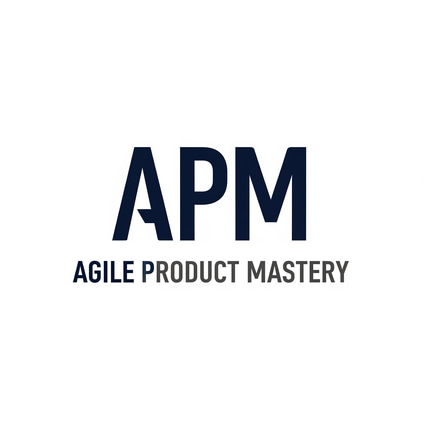From Backlog to Breakthrough: The 7 Deadly Sins of Agile Product Management (and How to Avoid Them)
Discover the 7 common mistakes that hold Agile Product Managers back—and learn how to avoid them with proven strategies from the Agile Product Mastery (APM) Framework. From prioritizing backlogs effectively to aligning stakeholders and focusing on real outcomes, this guide will help you transform your product delivery from chaotic to breakthrough. Perfect for product owners, managers, and agile coaches aiming to boost team performance and deliver lasting value.
AGILE PRODUCT MANAGEMENTAGILE PRODUCT MASTERY FRAMEWORK
Written by: Matt Gregory - Founder Agile Product Masters
5/18/20254 min read


Introduction
Agile Product Management is meant to be a beacon of clarity, speed, and customer focus. Yet, many product teams find themselves trapped in cycles of “doing Agile” without actually delivering value. Endless sprint ceremonies, bloated backlogs, stakeholder demands, and shifting priorities — sound familiar?
If you’re feeling the heat, you’re not alone.
This post reveals the 7 Deadly Sins of Agile Product Management that quietly sabotage progress. More importantly, we’ll show you how to avoid them using the Agile Product Mastery (APM) Framework — a simple, powerful model built on Strategic Alignment, Execution Excellence, and Continuous Adaptation.
Let’s dive in.
1. No Strategic North Star
Symptom: You’re delivering features… but no one knows why. The team executes tickets, but stakeholders question the impact.
This is perhaps the most dangerous sin: building without direction. Without a clear strategic vision, product teams fall into the trap of chasing requests, mimicking competitors, or blindly responding to internal pressure.
APM Fix: Strategic Alignment
Establish a product vision that aligns with business objectives and user needs. Develop outcome-driven roadmaps, not just feature lists. Tools like OKRs (Objectives and Key Results) are vital here—they anchor initiatives in measurable outcomes and provide a guiding light for every sprint.
Pro Tip: Start every planning session by revisiting your product vision. If a feature doesn’t serve that vision, kill it.
2. Bloated Backlogs
Symptom: Your backlog is a black hole of forgotten ideas, outdated tickets, and low-value requests. It overwhelms, confuses, and rarely delivers.
Many product managers fall into the trap of backlog hoarding, believing that more ideas = more value. In reality, a messy backlog is a productivity killer.
APM Fix: Execution Excellence
Apply ruthless prioritization. Use frameworks like RICE (Reach, Impact, Confidence, Effort) or ICE (Impact, Confidence, Ease) weekly to rank ideas and remove clutter. Keep your backlog lean, focused, and visible.
Pro Tip: Host a monthly “Backlog Bonfire” where you archive or delete stale tickets.
3. Stakeholder Whiplash
Symptom: Your team changes direction every sprint based on the latest executive opinion. Priorities shift without warning or rationale.
Agile thrives on adaptability — but not chaos. Constant stakeholder U-turns kill momentum and erode team trust.
APM Fix: Strategic Alignment
Build stakeholder trust through transparency. Maintain a living roadmap and hold regular syncs (like biweekly stakeholder check-ins). Create feedback loops that invite input at the right time—not mid-sprint.
Pro Tip: Treat your roadmap as a contract with caveats. Changes are allowed — but they must be intentional and explained.
4. Velocity Worship
Symptom: Teams obsess over velocity charts, celebrating how many story points they delivered — even if users see no benefit.
Velocity is a team capacity metric, not a measure of success. When you worship velocity, you lose sight of outcomes and customer value.
APM Fix: Continuous Adaptation
Shift focus from output to outcomes. Measure product success through customer satisfaction, usage analytics, adoption rates, and feedback loops. Retrospectives should discuss what was learned, not just what was delivered.
Pro Tip: Supplement velocity with north star metrics like NPS, retention, and engagement.
5. Overplanning and Underlearning
Symptom: Your team spends weeks (or months) planning detailed features, only to have them invalidated by user feedback after launch.
Overplanning is a holdover from waterfall thinking. In complex, fast-moving markets, detailed long-term plans become obsolete quickly.
APM Fix: Continuous Adaptation
Replace rigid plans with hypothesis-driven development. Use lean experiments, MVPs, and prototypes to validate ideas before scaling. Learn fast, iterate faster.
Pro Tip: For every major feature, ask: “What’s the smallest thing we can build to test this idea?”
6. The Invisible Customer
Symptom: Product decisions are driven by internal debates, not user feedback. The customer is missing from the process.
In Agile, the customer is supposed to be front and center — yet many teams forget to include real user insight in day-to-day work.
APM Fix: Execution Excellence
Bake user research and feedback loops into your workflow. Interview users regularly. Use usability testing, surveys, and analytics to guide prioritization. Make personas real, not decorative.
Pro Tip: End every sprint with at least one user touchpoint — even if it’s a single interview or a quick prototype test.
7. Product Manager as Project Manager
Symptom: You spend your time chasing blockers, coordinating meetings, and updating Jira — instead of owning product strategy.
Too often, Product Managers fall into delivery management. While collaboration is key, this sin costs time and vision.
APM Fix: Strategic Alignment
Empower Scrum Masters or Delivery Leads to handle ceremonies and coordination. Your job is to own the “why” and the “what”, not the “how.” Create space for thinking, user discovery, and strategy.
Pro Tip: Audit your calendar weekly. Are your hours going toward product strategy and discovery — or admin?
The APM Framework: Your Blueprint for Product Success
The Agile Product Mastery (APM) Framework helps you avoid these 7 sins by building product capabilities across three pillars:
1. Strategic Alignment
• Define a clear vision and strategic direction
• Align roadmaps with business goals
• Engage stakeholders proactively
2. Execution Excellence
• Prioritize ruthlessly
• Deliver customer-centric outcomes
• Empower teams with autonomy and focus
3. Continuous Adaptation
• Embrace learning over planning
• Run fast experiments
• Measure and respond to real-world feedback
Conclusion: Don’t Just Manage. Master.
Avoiding these 7 deadly sins isn’t about perfection — it’s about awareness, agility, and intention.
When you lead with clarity, empower your team to execute with purpose, and stay open to learning, you don’t just manage backlogs — you build products that matter.
Use the APM Framework as your compass to go from backlog to breakthrough.
Ready to master your Product Owner journey?
Grab your copy of Agile Product Mastery: The Product Owner's Playbook to Strategy, Execution & Influence and take your skills to the next level.
© Agile Product Mastery — Build a career that scales. Not one that burns out.
Powered by Baltimore Advisory Pty Ltd — ABN 97 678 312 475 — All rights reserved
Follow us on LinkedIn
